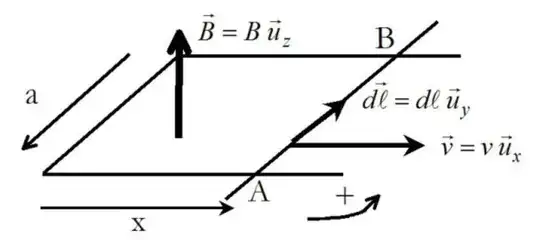I am going to reply a bit off topic here in that I am going to argue that Maxwell's equations, as they are commonly presented in modern texts, do not cover all possible situations of field generation. And that is even without considering the thorny issue of self-interactions mentioned by the OP and which have been covered to some extent by other answers.
The set of equations I am talking about are
\begin{eqnarray}
& & \vec{\nabla}\cdot \vec{E}=\frac{\rho}{\varepsilon_0} \\
& & \vec{\nabla}\cdot \vec{B}=0 \\
& & \vec{\nabla} \times \vec{E} = -\frac{\partial \vec{B}}{\partial t} \\
& & \vec{\nabla}\times \vec{B} = \mu_0 \vec{j} + \frac{1}{c^2}\frac{\partial \vec{E}}{\partial t}
\end{eqnarray}
Now, the 3rd Maxwell equation written above is supposed to be a PDE capturing Faraday's law. What this means is that, in principle, whether one wants to solve a problem of field generation involving Faraday's law, it should be equivalent to solve it using the 'macroscopic' law equating the induced $emf$ in a circuit to the (negative of the) time variation of the magnetic flux across a conducting loop or by solving the PDE given by the 3rd Maxwell equation written above.
Now, I am pretty sure that you have heard of the Laplace rails. They consist in a rectangular conducting loop with one of the sides that is actually mobile. When immersed in a uniform and constant magnetic field, moving the mobile part at some constant velocity $\vec{v}$ generates an $emf$ (and a corresponding non-potential electric field) in the conducting loop. See figure below taken from Ref 1.

As far as I am aware, explaining the generation of this $emf$ and corresponding non-potential electric field is not possible (unless someone comes up with a very contrived model-dependent solution) with the 3rd Maxwell equation provided above.
The reason for this is that in the derivation of the 3rd Maxwell equation from the macroscopic equation
\begin{eqnarray}
&& \oint_{\partial \Omega} \vec{E}\cdot \vec{d\ell} =-\frac{d}{dt} \iint_{\Omega} \vec{B}\cdot \vec{dS},
\end{eqnarray}
one often omits the fact that it is assumed that the domain $\Omega$ over which the flux is calculated actually may depend on time.
Consequently, a true 'microscopic' Maxwell PDE equation capturing fully Faraday's law of induction should in principle account for the kinematics of $\Omega(t)$ which is quite complicated to capture in all generality.
However, in cases of moving rigid bodies like for Laplace rails described above, one can find that the 3rd Maxwell equation needs to be amended in the following manner
\begin{equation}
\vec{\nabla} \times \vec{E} = -\frac{\partial \vec{B}}{\partial t}+ \vec{\nabla} \times \left(\vec{v} \times \vec{B} \right)
\end{equation}
I could not find such descriptions in most common reference texts in electromagnetism and I certainly was not told about it during my studies.
The only treatments I am aware of are from The Classical Theory of Electricity and Magnetism by Abraham and Becker (page 141) and a slightly more model-dependent one in Classical Electricity and Magnetism by W.K.H. Panofsky (page 147).
It is noteworthy that the above modified equation is mentioned for moving media in Jackson's famous textbook on Classical Electrodynamics but the author claims that one can just do away with the $\vec{\nabla}\times(\vec{v}\times \vec{B})$ term by putting oneself in a proper inertial frame. I am not too sure this argument holds in all cases, especially when the field across a closed loop is concerned.
